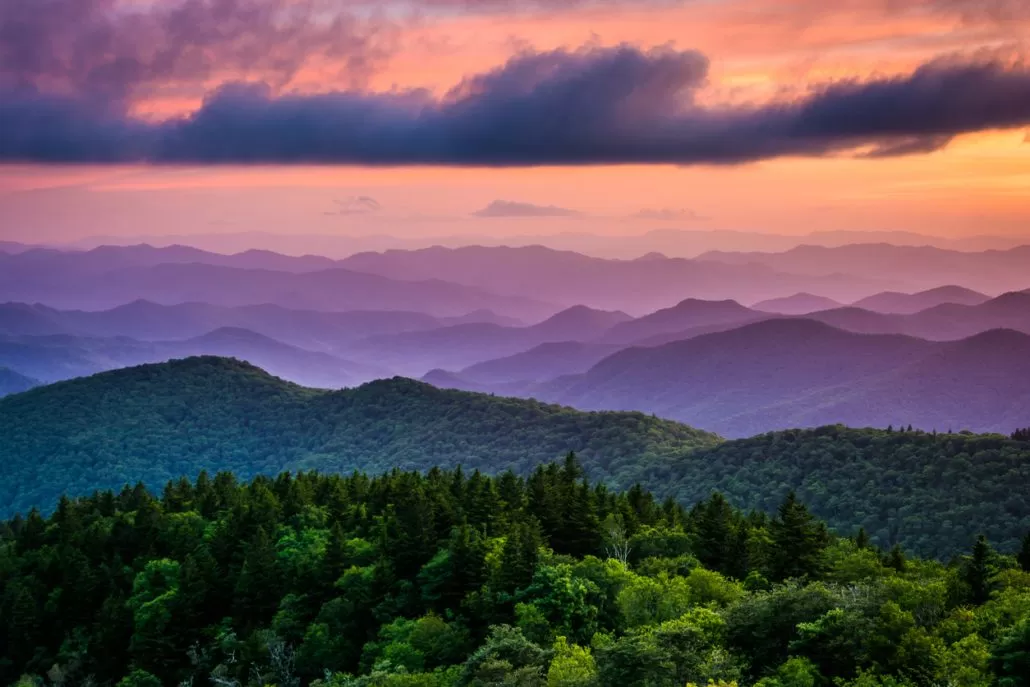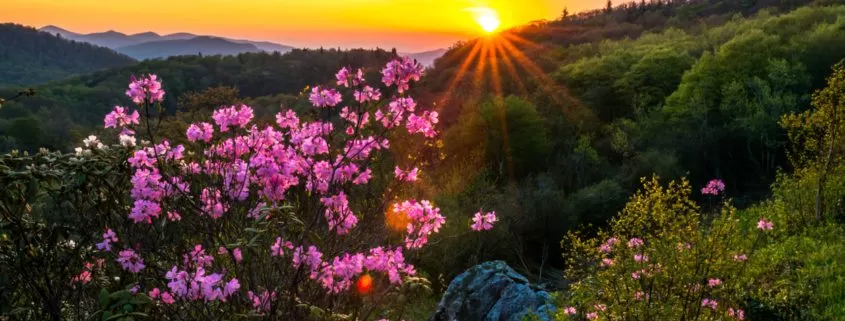Exploring the Trees of Pisgah National Forest
Pisgah National Forest, nestled in the heart of the Blue Ridge Mountains, is a hiker’s paradise, a photographer’s dream, and a treasure trove for anyone who appreciates the majesty of trees. With an astounding diversity of over 130 tree species, each with its own unique story and character, Pisgah offers a vibrant tapestry of arboreal wonders. Let’s embark on a virtual walk through this forest, discovering some of its most remarkable tree residents.

Lowland Forests:
- Eastern White Pine: Towering giants with soft, fragrant needles, these pines were once the dominant trees in the region. Look for their majestic silhouettes against the sky, especially in the Bent Creek Experimental Forest.
- Liriodendron Tulipifera (Tulip Poplar): Nicknamed the “tulip tree” for its showy blooms, this fast-growing giant boasts the largest leaves of any native North American tree. Keep an eye out for their vibrant yellow flowers in spring.
- American Sycamore: These giants stand out with their mottled bark and unique peeling habit, creating a captivating patchwork effect. Spot them lining the banks of streams and rivers, where they thrive in moist environments.
Mid-Elevation Forests:
- Chestnut Oak: A keystone species in the forest ecosystem, these oaks provide food and shelter for countless creatures. Their acorns are a vital food source for deer, squirrels, and other wildlife.
- Sourwood: Don’t let the name fool you, the clusters of white, bell-shaped flowers on this tree are anything but sour! They emit a sweet fragrance, especially noticeable in late spring, and attract a variety of pollinators.
- Red Maple: A vibrant splash of color in autumn, the red maple’s fiery leaves transform the landscape into a breathtaking spectacle. Look for them along hiking trails and scenic overlooks.
High-Elevation Forests:
- Fraser Fir: This iconic tree, with its dense, silver-green needles and distinctive cone-shaped form, defines the subalpine ecosystem. Sadly, the balsam woolly adelgid has significantly impacted these trees, but conservation efforts are underway.
- Red Spruce: Sharing the high elevations with the Fraser fir, red spruce is a resilient and long-living conifer. Its sturdy branches provide shelter for birds and other animals during harsh winters.
- Catawba Rhododendron: Not technically a tree, but a towering shrub, the Catawba Rhododendron is a sight to behold. Its large, showy pink flowers bloom in late spring, painting the mountain slopes with a delicate blush.
This is just a glimpse into the diverse and fascinating world of trees in Pisgah National Forest. Each species has its own unique story to tell, its own role to play in the intricate web of life. So, lace up your boots, grab your camera, and head out to explore this incredible forest. With every towering oak, every fragrant pine, and every blooming rhododendron, you’ll discover a new wonder, a new appreciation for the arboreal giants that grace our planet.
Bonus Tips:
- For a more in-depth exploration, consider joining a guided nature walk or hike led by a forest ranger or naturalist.
- Download a tree identification app to help you recognize the different species you encounter.
- Remember to practice responsible outdoor recreation and leave no trace, so future generations can enjoy these magnificent trees for years to come.
We hope you feel inspired to discover the wonders of Pisgah National Forest! While you do, we encourage you to enjoy our forest lodging just outside the entrance to the forest. Learn more at pilotcove.com.


